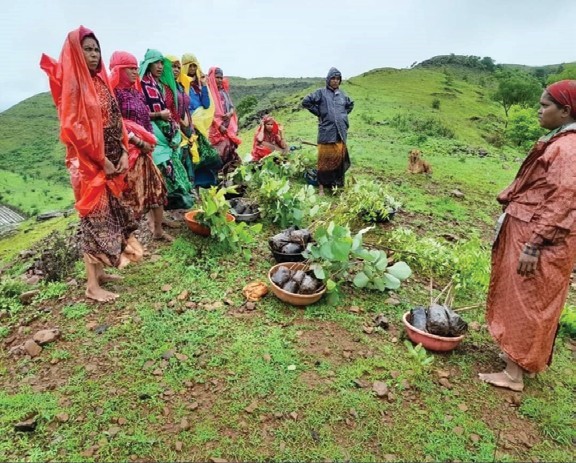 Planting of more broad leaf species like the Oak in the Himalayan forest areas and villages will contribute to restore mixed species and also improve soil and water conservation significantly
Planting of more broad leaf species like the Oak in the Himalayan forest areas and villages will contribute to restore mixed species and also improve soil and water conservation significantly
Perhaps the most important conservation task today is to protect whatever remains of our natural forests and resources. Where forests have been degraded badly, conducive conditions for regeneration need to be created so that forests can be regenerated very similarly to natural forests. In forests where water sources are depleting due to complex factors, water and moisture conservation work should be taken up to maintain the green cover and ensure that wildlife flourishes.
Whether inside or outside forests, tree cutting should be minimised. In projects involving unavoidable deforestation, reforestation work should be given as much importance as the project itself, with proper budget, responsibility, accountability and details worked out well in advance.
Where indigenous forest species mix has been badly tinkered with, attempts should be made to restore. In many Himalayan Forest areas and villages, planting of more broad leaf species like the Oak will contribute to restore the mixed species as well as to improve soil and water conservation significantly.
Strong steps should be taken to discourage poaching and trafficking/smuggling of animals/birds /insects and body parts.
Beyond forest areas, villages should follow eco-friendly agricultural practices which avoid poisonous agro-chemicals, particularly pesticides. Rural as well as urban areas should avoid use of such hazardous chemicals while giving priority to increasing green cover bases on mixed local tree species, taking special care to protect natural pollinators.
Similarly, conservation of grasslands, water bodies, wetlands, floodplains and other important habitats will also be very helpful. Significant reduction of water pollution is of course important, as also taking care to ensure that construction projects on rivers and water bodies do not endanger aquatic life.
Local people including adivasis, fisherfolk, and other villagers living in or near forests, should be involved to obtain best results based on their traditional knowledge. In the process,
 Adivasis, fisherfolk, and other villagers living in or near forests should be involved in conservation efforts for the best results ( Pic courtesy: Sarayu Kamat, VP Climate Change Initiatives, Raah Foundation)
Adivasis, fisherfolk, and other villagers living in or near forests should be involved in conservation efforts for the best results ( Pic courtesy: Sarayu Kamat, VP Climate Change Initiatives, Raah Foundation)
their livelihoods should be enhanced without displacement. If some of their livelihoods pose threats to environment, they can be replaced by those based on conservation efforts. The overall result should be to provide them sustainable livelihoods. To systematically encourage and implement this at the national level, a proper budget allocation should be made.
Conservation efforts in India need to be well thought out. Lakhs have been either displaced or victimised. What is described as success in official documents has often brought distress to people. Imbalances in species due to faulty conservation practices have led to frequent and extensive harm of cultivated fields.
Also, elite tourism-centric approach and expensive projects with suspect benefits have led to neglect of the most basic conservation tasks. Some time back when a young tiger was re-located from Pench to Panna, the animal started moving homeward after a few days. As reported in the Indian Express (September 19, 2022), “With four elephants and 70 teams of government officials and volunteers behind him, the tiger walked 440 km. in 30 days toward Pench through Chattarpur, Sagar and Damoh districts, before it was finally intercepted and brought back to Panna.”
Disconcerting that such an expensive exercise was undertaken when big and small animals are known to have a strong sense of direction and are prone to walking back home to their ‘territory’. The chances of absurdities, mistakes and projects far removed from reality can be minimised considerably if local communities are involved in decision-making. Their traditional knowledge and wisdom should be sought in conservation efforts.

